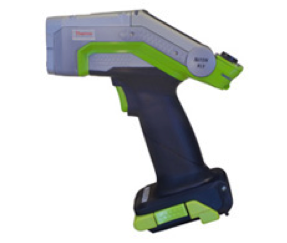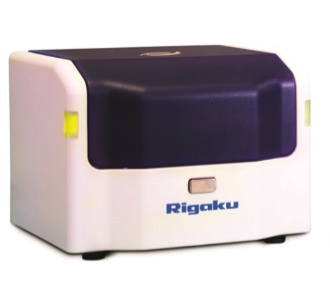April 23, 2019 -- The focus of today's atomic spectroscopy series will be X-ray fluorescence spectroscopy, known as XRF. XRF provides analysis of the atomic composition of samples for a wide variety of applications. The technique is particularly well suited for analyzing the elemental range from sodium to uranium, covering the majority of the metallic elements. XRF can be adjusted in order to detect lighter elements. Many samples can be effectively examined non-destructively, though others will require grinding, fusion, or some other form of sample preparation, in order to ensure that the measurement reflects the bulk properties of the sample rather than the surface.

XRF consists of three components: the x-ray tube, the detection system, and a software package to process the collected data. Essentially, high-energy x-rays eject electrons from the inner electron shells of the atoms in the sample. When electrons make a quantum transition from an outer shell to fill in the vacancy left by the ejected inner-shell electrons, energy is emitted in the form of x-rays, which are detected by the spectrometer portion of the instrument. The emitted energy or wavelength helps to determine which element it is. The strength of signal from each component reveals the relative concentration of each element in the sample.
Among the different products within XRF are wavelength-dispersive (WDXRF) spectrometers, which use diffraction on a crystal to separate photons for detection. Energy dispersive (EDXRF) systems are more general-purpose instruments and operate by determining the energy of the detected photon. In total reflectance XRF (TXRF), grazing angle analysis of flat surfaces provides extreme sensitivity to surface layers, thin films, or particulate analysis. XRF thickness gauges and microspot XRF (aka X-ray microscopes and micro XRF) use tightly focused X-ray beams to probe small areas. Grazing incidence (GIXRF) is used for depth profiling and characterization of thin layers using fluorescent signals at different incidence angles. Finally, handheld XRF offers analysis in a portable form for applications in product safety testing, principal material identification (PMI), recycling and other applications.

XRF is a preferred method for researchers especially when compared to techniques such as atomic absorption, inductively coupled plasma spectroscope or WDXRF. While each method is effective, those listed tend to be limiting due to high cost, narrow function, and destructive nature.
What do you think?
Is atomic spec a part of your work? What other technologies would you like to see uncovered?
Copyright © 2019 scienceboard.net


